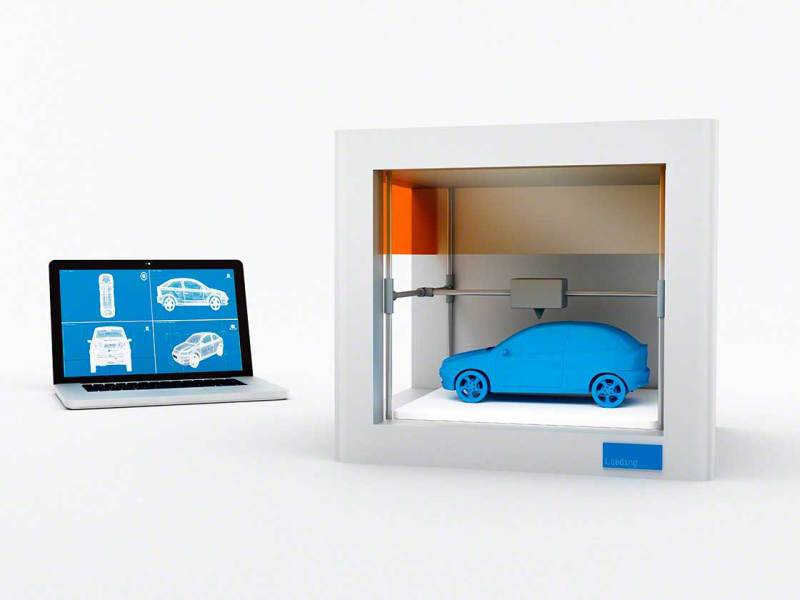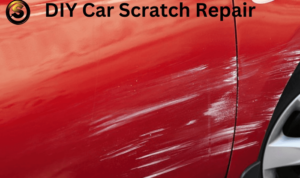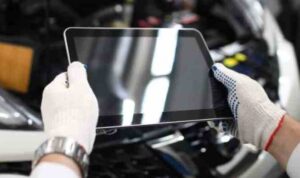3d Printing Car Parts 2025 – What was once considered science fiction technology is evolving to become an integral part of automotive production, with more uses than we thought.
3D printers – electronic devices capable of printing three-dimensional objects layer by layer – are nothing new. The theoretical basis of the technology was developed in the 1970s, with the first implementation in the 1980s.
3d Printing Car Parts 2025

Initially, this process was time-consuming and the materials that could be printed on were not known for their durability and strength, limiting the potential use of this technology.
Us Army To Expand Production Of 3d Printed Parts For Hmmwv Vehicles
However, the ease with which three-dimensional objects can be easily transferred from the computer to the real world caught the attention of large companies, which gradually adopted the technology that gave rise to rapid prototyping.
The automotive industry was one of the first to adopt 3D printing in the design and development of concept cars.
Classic 3D printers have allowed designers and engineers to create different variations of parts, testing their durability, aerodynamics, ergonomics and style. This method saves a lot of time and money, especially when compared to other expensive and time-consuming production methods.
Also, unlike molding, 3D printing has no restrictions on the shape of the object, which allows greater freedom for designers and engineers, resulting in significant weight savings.
D Printed Body Kits: Could It Become A Thing?
Over the years, technology has evolved to print objects using a wide variety of materials, including ABS plastic, nylon, epoxy resins, wax, silver, titanium, metal, photopolymers, polycarbonate, ceramic, and carbon fiber.
This meant that 3D printers were no longer limited to developing prototypes, as they became technically viable and capable of mass production economically, using the term additive manufacturing.
The first car with a fully 3D-printed body was the Urbee (2010), a three-wheeled aerodynamic prototype with a fully enclosed body designed by engineer Jim Kor.
In 2014, Christian von Koenigsegg announced that his company will use 3D printing in the limited production of the Koenisgegg One:1 hypercar (2014-2016).
Here’s How Practical It Really Is To 3d Print A Car
For the first time, 3D printers are being used for mechanical parts on a production car, including the 5.0-litre 1000kW V8 engine’s variable turbo and magnesium exhaust pipes.
One company that quickly adopted 3D printing was Local Motors of Arizona, USA. His Strati concept was made entirely with a 3D printer, except for the electric motor, battery and wiring.
It took 44 hours to produce and assemble a working prototype with two people, a computer and a 3D printer.
The next step was Local Motors Oli, a 3D-printed autonomous van that was developed with plans for small-scale production.
Indian Auto Parts Aftermarket Biz To Reach Usd 17 Billion By 2025: Experts, Et Auto
Croatia’s Rimac Automobili, which has rapidly grown from a small hypercar manufacturer to a major supplier of electric powertrain systems to several established automakers, has been using 3D printers for the R&D of the C_Two all-electric hypercar that is currently in the final stages of development.
A good example of how 3D printing can speed up the design and development of a production car is the Ford Mustang Shelby GT500.
Ford used rapid prototyping in the design of the aerodynamic kit for maximum downforce and various cooling components that improve heat management. Additionally, the production model uses 3D-printed brake pad components created at Ford’s Advanced Manufacturing Center in Redford, Michigan.

Speaking of brakes, in 2018 Bugatti launched the first 3D-printed eight-piston monobloc brake caliper made of titanium, also the largest in the automotive industry.
Ferrari Sp48 Unica: One Off Supercar Benefits From 3d Printing
In addition to the obvious cooling factor, its design makes it 40 percent lighter than a standard aluminum caliper while still being strong enough to withstand high pressures under heavy braking.
Bugatti also uses 3D printing on the titanium exhaust covers used on limited production models such as the Chiron Sport, Chiron Super Sport 300+, Chiron Pur Sport, Divo, La Voiture Noire and Centodieci, with weight saving benefits.
Another company that is currently at the forefront of 3D printing is Porsche. In 2018, the Stuttgart manufacturer offered a range of around 20 3D reprinted parts made of plastic, titanium or aluminum alloy for its classic models.
Those parts, like the 959 clutch release lever, were out of stock and needed by classic car owners. Its production in such small quantities would not be possible if it were not for additive manufacturing, as the necessary equipment was too damaged or destroyed.
D Printing And The Supply Chain
In May 2020, Porsche offered free 3D printed bucket seats for the 911 and 718. Those custom backrest cushions are made of expanded polypropylene covered with a breathable comfort layer of polyurethane-based materials and perforated outer leather (Racetex).
The project started with examples of seats that will only be used on the track, but from 2021 they will be available as a street-legal option, with customers able to choose between three levels of stiffness and many different colors.
Porsche is also using a 3D printer to produce the pistons used in the 911 GT2 RS engine.

This allowed for 10 percent less weight compared to conventional forged pistons and the integration of a closed cooling nozzle within the piston crown that would not be possible with conventional manufacturing methods.
Vw’s New 3d Printing Tech Will Allow For Lighter Metal Parts That Can Be Mass Produced
Thanks to the increased production, the Zuffenhausen engineers were able to increase the engine speed, reduce the temperature and increase the combustion power, extracting an additional 22 kW of power from the already powerful 515 kW boxer engine.
On the other side of the Atlantic, Los Angeles-based Czinger is 3D printing parts under contract for other automakers, but also its first production car: the Czinger 21C hybrid hypercar.
Most of the car’s components are made with state-of-the-art 3D printers developed in-house, including parts of the chassis, suspension, body and passenger compartment.
Those parts are made of aluminum, titanium, carbon fiber and other materials. The key here is 3D printing’s ability for mass production, as suggested by Kevin Czinger, the company’s founder and CEO.
Stratasys, Toyota To Produce 3d Printed Parts
Among the early adopters of 3D printing was BMW, which began using the technology in 1991. As of 2019, BMW’s annual production of 3D printed parts has surpassed the 300,000 mark.
In 2020, following an investment of 15 million euros, the BMW Group opened a new campus for additive manufacturing in Munich, Germany, with the aim of accelerating vehicle development and reducing production times for future models.
The new facility houses half of BMW’s global capacity of 100 specialized 3D printers that work with metal and different types of plastics, and currently employs 80 people.

The Volkswagen Group has also been using additive manufacturing since the late 1990s and is investing heavily in technology for each sub-brand using its 3D printers: Audi (Ingolstadt), Bentley (Crewe), SEAT (Barcelona), Skoda (Prague), the aforementioned Bugatti (Molsheim) and Porsche (Stuttgart), and the main Volkswagen plant (Wolfsburg).
A Project To Save Time And Energy With 3d Printed Mining Parts
The German brand is already crash-testing platforms with 3D-printed parts and plans to put them into production from 2023. Volkswagen also 3D-prints all tools, jigs and fixtures used in factories, saving 91 per percent in development costs. and reducing development time by 95 percent.
In the near future, Volkswagen plans to offer a range of 3D printed car parts, such as custom gear knobs, key switches or tail letters, using HP’s Metal Jet technology. The goal is to print 50,000 to 100,000 pieces per year.
Some notable examples of 3D printed parts are body kits for the Daihatsu Copen (2016), dashboard trims and other parts for the Mini Cooper (2018), and a full range of accessories for the Fiat Centoventi concept (2019).
3D printing has proven to be here to stay and its use in the automotive industry will continue to grow exponentially in the coming years. In addition to prototype design and development, automakers are moving toward using additive manufacturing as an important part of the production of cars, large and small.
Here’s How To Get Started 3d Printing Your Own Car Accessories
This technology is expected to revolutionize car customization, allowing designers to create more variations of exterior and interior parts and users to continue customizing their cars to their liking.
The fact that 3D printers are more affordable and accessible to the general public opens up new opportunities for the commercial use of this technology.
It is possible that in the future, each user will be able to buy and download – or even create – CAD files for any product that includes car parts, 3D print them at home and place them in their car.

Finally, the ability of 3D printers to create complex shapes that combine different materials into a single object could represent a new revolution, although it is still in its early stages.
D Printed Car Accessories Give New Peugeot 308 High Tech Flair
Mixed additive manufacturing can enable even more efficient designs, significantly reducing the number of parts needed for a given task and shortening development and production times. Various 3D printed composite frames, external components and a solid firewall sandwich core give a 1960s style supercar. . automation of production in the 21st century.
Ant Anstead shows off a 3D printed part of the Lotus 62-2 model that was built as shown in the Discovery+ documentary.
Polymer 3D printing solutions company Stratasys (Rehovet, Israel and Eden Prairie, Minnesota, USA) has partnered with Radford Motors (Newport Beach, California, USA),
3d printing car interior parts, 3d printing classic car parts, 3d printing metal car parts, 3d printing model car parts, 3d printing plastic car parts, 3d printing car parts, 3d printing car body parts, 3d printing car parts reddit, 3d printing 2025, 3d printing rc car parts, quick parts 3d printing, 3d printing old car parts
- DIY Car Scratch Repair Tips: Expert Advice for Flawless Results - December 23, 2024
- Winter car maintenance checklist: Essential tips for winterizing your vehicle - December 22, 2024
- How to check car fluid levels - December 21, 2024








